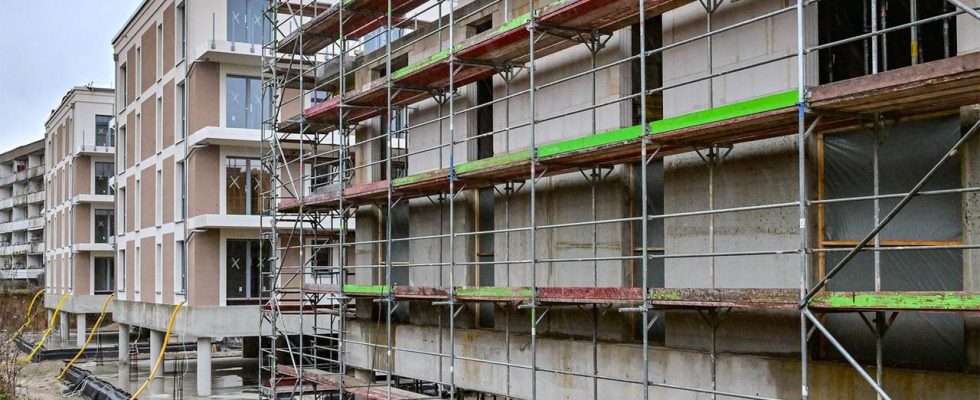There is too little construction going on: the number of building permits issued will also fall in the new year compared to the previous year. The reasons for this are high interest rates on real estate loans and expensive building materials.
The decline in residential construction continued at the beginning of the year. In January, 16,800 building permits were issued, as the Federal Statistical Office announced today. That was 23.5 percent less than in January of the previous year. Compared to January 2022, the number even fell by 43.4 percent.
The number of building permits for single-family homes fell by almost half in January of this year: it fell by 42.7 percent to 2,800. 19.6 percent fewer two-family houses were approved, and the number of approved apartments in apartment buildings also fell significantly by 20 percent to 9,200 apartments. In total, just 13,500 building permits were issued for new residential buildings in January.
Building remains expensive
The main reason for the builders’ reluctance is the sharp rise in interest rates for real estate loans. In addition, there are high construction prices due to expensive materials, the prices of which have risen as a result of inflation. Many construction projects are being postponed or canceled, especially in residential construction.
“The renewed decline in building permits underlines the dramatic slump in housing construction in Germany,” said Sebastian Dullien, scientific director of the Institute for Macroeconomics and Economic Research (IMK) of the trade union-affiliated Hans Böckler Foundation. The federal government’s former goal of completing 400,000 new apartments every year is becoming increasingly distant.
“Based on the current order intake, it is likely that only a little more than half as many apartments will be completed,” said Dullien. A revival can only be expected with a delay after the upcoming interest rate cuts by the European Central Bank (ECB), which could begin in the spring. The reductions are only expected from April, and housing construction is likely to reach its lowest point in the course of 2025, Dullien continued.
Scholz is confident
Chancellor Olaf Scholz had recently expected an end to the downward trend. “There is much to suggest that housing construction is now stabilizing,” Scholz said on Friday at an event organized by the Central Association of the German Construction Industry (ZDB). The labor market is remarkably robust; more women and men are employed in Germany than ever before.
“Thanks to rising wages, purchasing power is also growing, and building prices could finally fall again this year after years of increases,” said Scholz. In addition, many building materials have now become cheaper again.
Housing construction target still in danger
This upward trend is likely to come too late for the federal government’s goals: Originally, 400,000 new apartments were supposed to be built every year in order to meet the growing demand, especially in large cities. According to experts, this target will not be achieved in 2024 either, after it was clearly missed last year.
Dullien assumes that only a little more than half as many apartments will be completed this year. The German Institute for Economic Research (DIW) also expects only 265,000 new apartments. According to the “Social Housing” alliance, there is a shortage of more than 910,000 social housing units alone.
prices for energy efficient Real estate is rising
The existing market is currently inconsistent. While old buildings in need of renovation are becoming more and more slow-moving, according to a study by ImmoScout24, energy-efficient living is in demand. Contrary to the general trend, the asking prices for renovated properties in the highest energy efficiency classes A and B rose by 2.2 percent in the fourth quarter of 2023 compared to the same period last year to an average of 4,958 euros per square meter. During this period, however, the prices for properties in classes C and D fell by 7.2 percent and in classes E to H by 6.8 percent.

